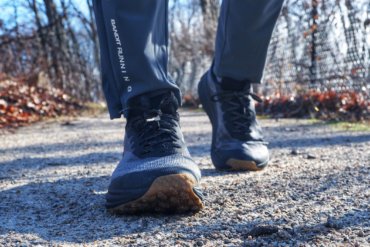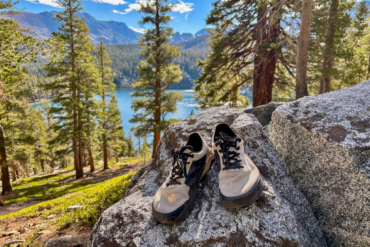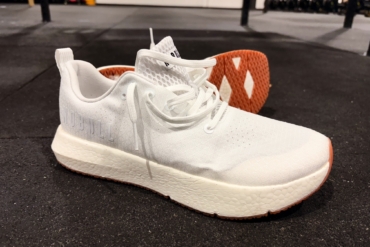The phenomenon of shoes with articulated toes is one of the strangest product trends in the outdoors and running worlds in recent years, and maybe ever. But the funny footwear is immensely popular and indeed becoming almost commonplace at backcountry trailheads and footrace starting lines across the United States. Since 2005, when Vibram S.p.A. introduced its original FiveFingers shoe, a growing niche of walkers, hikers and runners have come to appreciate the dexterous shoes’ tight fit and allowance for a natural stride.

Today, Vibram has a large line of FiveFingers shoes for men, women and children. On its website, www.vibramfivefingers.com, there are more than 25 models, including cross-trainers, causal, and running-oriented styles.
Prices range from $75 for the FiveFingers Classic model, up to $125 for the men’s or women’s KSO Trek. The latter is a Velcro-strapped toe shoe complete with kangaroo leather uppers. Yes, these are odd creations!
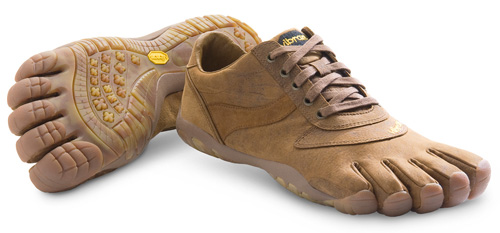
There are kids models with pink or blue color schemes. Some VFFs, as they’re called, have laces and tongues. The weirdest VFFs are seen in the company’s 2011 “causal line,” which includes high-tops, dressy shoes, and winter “boots” — all equipped with toes!

Vibram touts its shoes as good for tasks varying from weight lifting to rock climbing to surfing, though it is a segment of the running world that has most embraced the build. The movement of “barefoot running,” which focuses on a “natural running” stride by using minimal footwear and a different type of running technique, has taken to VFFs like no one else.
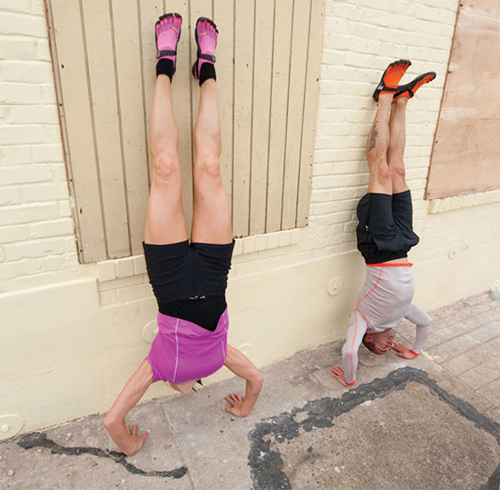
Literally tens of thousands of runners have “seen the light” and changed their running ways, and VFFs have been a big part of that experience for many of them. The result is a near-cult following that has sent Vibram’s sales through the roof.
Beyond Vibram, there are a couple minor players in the toe-shoe game. Indeed, with any great success come copycats, and last week, as I wrote about in the blog, it was announced that Vibram S.p.A. would be suing Fila USA Inc. for making a shoe too similar to its FiveFingers line. For now, the Fila shoes, called the Skele-toes, are still for sale at www.fila.com for $44.99 and up.
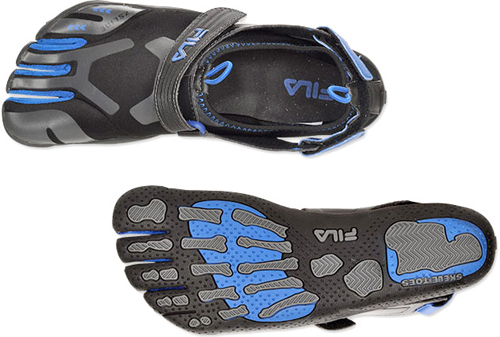
Fila has launched an aggressive advertising campaign to try and capitalize on the toe-shoe buzz. This includes freeway billboard advertisements in two-dozen metropolitan areas in the U.S. One billboard shows the Skele-toes shoes suspended and about 60 feet wide, the giant text adjacent reading simply “WHAT THE HECK IS THAT?”
With a slogan of “For Just About Everywhere,” Fila’s Skele-toes shoes are not made specifically for running as some of the FiveFingers are. They are less “sporty” and with a build that’s not as engineered and precise, especially on the sole. They come in four styles, including shoes for men, women and children.
Overall, the Fila shoes are stiffer than FiveFingers and built more for casual wear as opposed to intense activity. Another distinguisher is found in the toe pockets, as the Skele-toes cram your two smallest toes together in a single double-wide compartment.
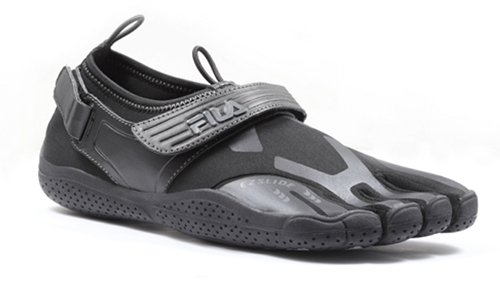
A third toe-shoe contender comes from Inov-8 Ltd. and its Evoskin, a minimalist shoe I recently reviewed in the blog. The Evoskin is made entirely of silicone, essentially a foot mold with individualized toes. It came to market this year for $65 and will appeal to the smallest subset of toe-shoe fanatics.
The Evoskin is the most minimal of all toe-shoes. Wearing them, you can feel even tiny pebbles on the ground through the thin, squishy soles. I compare the experience less to wearing shoes and closer to suddenly acquiring large calluses under each foot.
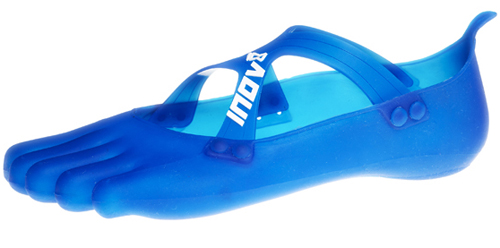
Finally, a primer on toe-shoes would not be complete without mention of a popular “toe-sock” that’s grown up alongside the rise of the Vibram FiveFingers shoes over the last few years. The company is Injinji Footwear, and its socks comes with articulated toes.
You can wear toe-socks with shoes like the VFFs or in “normal” footwear. They are made for yoga, running, hiking, and casual wear. The company even has compression socks, which I reviewed last year, complete with toes (image below).

Toe-shoe wearers are divided on when to employ toe-socks the likes of the Injinjis. Most VFF subscribers go sock-less inside their shoes, as far as I have seen. But some people like the extra cushion and the thin sheen between their skin and a shoe footbed.
With regular shoes on, one benefit touted with toe socks is blister prevention, especially for anyone who has toes that rub together and blisters that develop in between the toes because of it. Downsides include a sock that takes four times longer to put on, as well as “are you serious?”-type looks from anyone who sees you light-footing around indoors with ensconced toes.
Despite their silly looks, in recent years millions of Americans have strapped on these socks and the even more popular toe-shoes. If you’re curious, I encourage a wear test at a shoe store. If you like the fit and feel, walk out of the store with your chin up. Your newly-dexterous feet may look funny, but with a continued rise in popularity and use, you’ll hardly be alone.
—Stephen Regenold is founder and editor of www.gearjunkie.com. Connect with Regenold at Facebook.com/TheGearJunkie or on Twitter via @TheGearJunkie.

